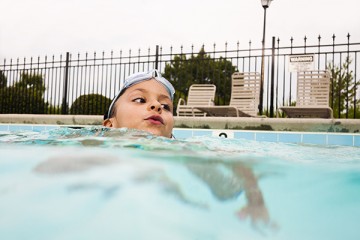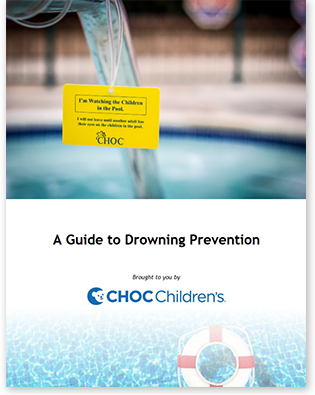7 Silent Signs of Someone Drowning

Do you know what drowning looks like? There is no splashing, screaming or raised arm. It’s quick and silent.
Drowning doesn’t mean flailing arms and calling for help. Those watching swimmers often don’t know what to look for – because drowning doesn’t look like drowning. Knowing these silent signs can mean the difference between life and death.
- A drowning person can’t call for help. A drowning person has to be able to breathe before being able to speak. When someone is drowning, the mouth sinks below and reappears above the surface of the water. There isn’t time to exhale, inhale and call out.
- A drowning person can’t wave for help either. A drowning person instinctively extends their arms to the sides and presses down to lift their mouth out of the water; a child may extend their arms forward. They also can’t use their arms to move toward a rescuer or reach for rescue equipment.
- They remain upright in the water, with no evidence of kicking. A drowning person can struggle for only 20 to 60 seconds before going under.
- Their head may be hard to see. It may be may be low in the water with mouth at water level, or tilted back with mouth open. A child’s head may fall forward. Their hair may be over forehead or eyes.
- A drowning person may look like they are treading water with their arms in an attempt to lift their mouths out of the water. Their head will barely be above water or bobbing up and down.
- They are quiet. Children playing in the water make noise. When they get quiet, you need to get to them and find out why.
- A drowning person doesn’t seem in distress. Sometimes the most important indicator that someone is drowning is that they don’t look like they’re drowning. They may just seem to be looking up at the sky, shore, pool deck, or dock. If you see these signs, ask “Are you all right?” If they return a blank stare, you have less than 30 seconds to get to them.
Drowning is 100% preventable.
Get the facts today.
Three Tragic Seconds: Drowning Prevention.
In this class, parents learn about the problem of drowning: why it happens, where it happens and how it happens. It presents four action steps to prevent drowning: using layers of barrier protection, designating water watchers, learning CPR, and clearly communicating child supervision. This program can be brought to your community group. To schedule a visit, call 714-509-8887. This program is provided at no cost in English and Spanish.

Water Safety Tip sheets
Download Tip Sheet: English & Spanish
Children and water can be a fatal combination. Drowning is a quick and silent event. The good news is, this does not have to happen to your child. Drowning deaths can be prevented if the right action steps are taken.
- Always watch your child in and around water. If your child turns up missing, look at bodies of water first.
- Place at least two pool safety barriers between your child and the pool. Pool safety barriers can buy you time if your child gets out of your sight and heads towards the pool.
- Be prepared. Learn infant and child CPR in case of an emergency and have a phone nearby (to call 911). CPR may help you save a life.
- Assign someone to be a “Water Watcher”. A Water Watcher is always watching all the children that are in and around the pool.
- Remove toys. Toys attract children to the water and they might fall in the water when trying to grab the toy.
- No one is drown proof. Do not assume that your child is safe because he or she had swimming lessons.
- Empty out buckets and wading pools when they are not in use. Children can drown as little as two inches of water.
- Never leave a child alone in the bathtub. Do not count on a baby bath ring or seat to keep your child safe. Once bath time is over, immediately drain the bathtub.
When an accident happens, CHOC is ready with the only pediatric-dedicated emergency department and trauma center in Orange County. For more important tips to prevent injuries in children and teens, visit choc.org/safety.












